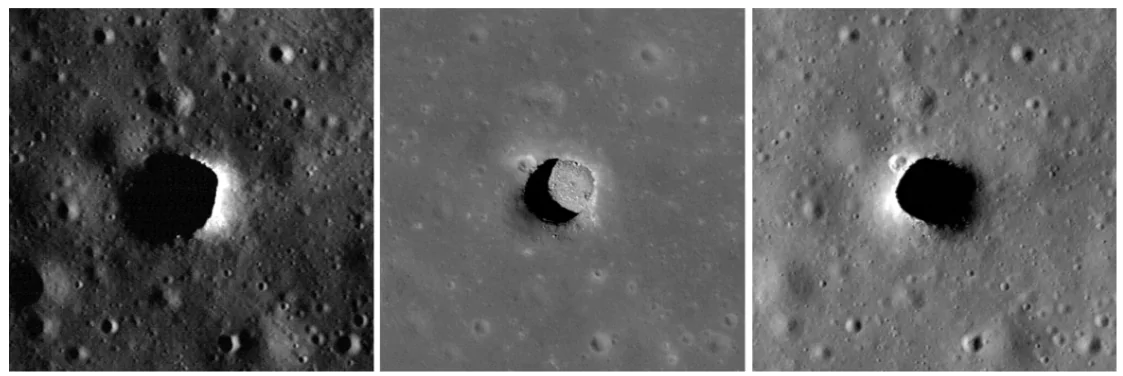A team of Italian scientists has confirmed the presence of caves on the surface of the moon
About the Cave
- Location: The cave is located at the Sea of Tranquility, just 250 miles (400 kilometers) from Apollo 11’s landing site (not far from the landing site of Neil Armstrong and Buzz Aldrin) and is accessible from the deepest known pit on the moon
- Moon’s ancient lava plains host most of the pits with some present at the moon’s south pole also.
- Data Source: Researchers analyzed radar measurements by NASA’s Lunar Reconnaissance Orbiter, and compared the results with lava tubes on Earth.
- The radar data reveals only the initial part of the underground cavity and estimates the cave to be at least 130 feet (40 meters) wide and tens of yards (meters) long.
- Published In: The findings were published in the journal Nature Astronomy.
- Process: The pit was created by the collapse of a lava tube.
- Pits were first discovered on the Moon in 2009 and an estimate 16 of the more than 200 pits are probably collapsed lava tubes
Enroll now for UPSC Online Course
- Significance of the Findings:
- The results of analysis suggest the presence of hundreds of pits on the moon and thousands of lava tubes.
- Natural Shelters: Such places could serve as a natural shelter for astronauts, protecting them from cosmic rays and solar radiation as well as from micrometeorite strikes.
- Cost effective habitat option: Building habitats from scratch would be more time-consuming and challenging, even when factoring in the potential need of reinforcing the cave walls to prevent a collapse.
- Thermally Stable Site: The pits, and caves would make thermally stable sites (about 17OC) for lunar exploration compared to areas at the Moon’s surface, which heat up to 1270C and cool to minus 1730C at night.
- Understanding of Moon’s Evolution: Rocks and other material inside these caves are unaltered by the harsh surface conditions over the eons which will help scientists better understand the evolution of the moon, especially involving its volcanic activity.

About Lava Tubes
- Lava tubes are formed in the presence of volcanic eruptions, where flowing lava cools down and crusts on the surface. This crust insulated the flowing lava inside, allowing it to flow for great distances before solidifying.
- Over time, these tubes may collapse due to seismic activity or impact events, creating a chain of pits and holes known as “skylights” extending away from the volcanic features.
- Found: Lava Tubes Pits have been observed throughout the Solar System, including the Moon, Mars, and Mercury which are similar to lava tubes on Earth.
Check Out UPSC CSE Books From PW Store
NASA’s LRO (Lunar Reconnaissance Orbiter)
- Launch: It was launched in 2009 initially for 2 years but is continuing to orbit the Moon.
- LRO was NASA’s first lunar orbiter since Lunar Prospector in 1998.
- Primary Goal: LRO created a 3D map of the Moon, as part of a program to identify future landing sites and resources including deposits of water ice shadowed in polar craters.
- THe LRO has found new life as a forward scout for the Artemis program, NASA’s project to return humans to the moon’s surface
|
![]() 16 Jul 2024
16 Jul 2024

